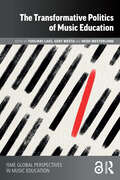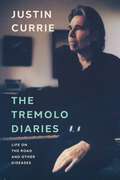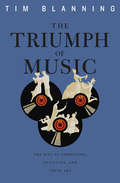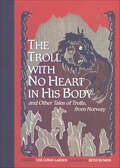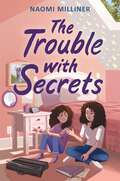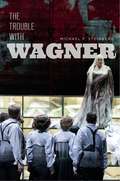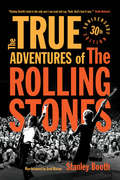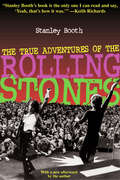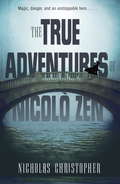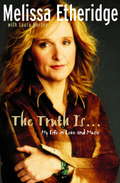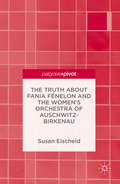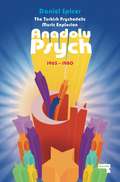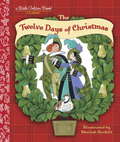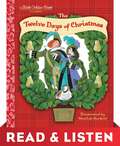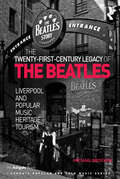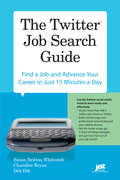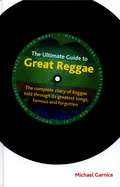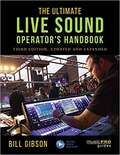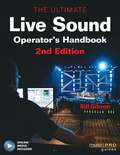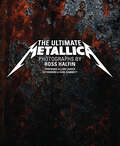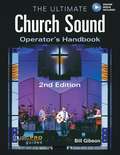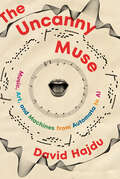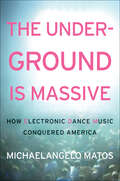- Table View
- List View
The Transformative Politics of Music Education (ISME Series in Music Education)
by Gert Biesta Heidi Westerlund Tuulikki LaesThis book introduces a unique approach to the interconnections between music education and politics. By taking a broader, more diverse, and explicitly ethico-political philosophical and theoretical stance, the book challenges institutional and structural conditions that may be resistant to change and expands the understanding of the professional responsibility of music educators in the 21st century to meet a variety of societal and ecological challenges.Emerging from a collaboration between international music education scholars and prominent contemporary educational theorist Gert Biesta, this book connects contemporary educational theories with music education to unlock its transformational capacity. In eight chapters, the contributors show how music education can move towards ways of being and doing that are attuned to social justice and to the broader social and ecological responsibility of music professionals. Strengthening the interdisciplinary connections between music education and education, philosophy, sociology, policy, systems thinking, and more, the volume offers a renewed vision of the scope and boundaries of both music teacher education and professional work in music more widely.Connecting the decades-long work of internationally established music educator scholars and ideas from large-scale research projects with a shared interest in transformative theorisation, this book fills a knowledge gap and reframes the philosophy of music education as a vibrantly multidisciplinary, theory-generating field. Relevant to researchers and students across music teacher education and performance studies, this book speaks to both conservatoires and university contexts across Europe and North America, helping us unlock the transformative capacity of music education.
The Tremolo Diaries: Life on the Road and Other Diseases
by Justin CurrieDel Amitri frontman Justin Currie reflects on life as a touring musician in the shadow of his life changing Parkinson&’s diagnosis. It&’s 2022 and we join Justin at the doctor&’s office, looking down the barrel of a Parkinson&’s diagnosis. After concerned fans noticed a tremor in his hand, Currie sought the medical advice which led him to the discovery that would throw his future into uncertainty. The immediate fallout of his diagnosis is laid bare in Currie&’s candid, stream of consciousness voice. A voice that is also by turns poetic, self-deprecating and darkly humorous across a series of diary entries that capture Justin&’s innermost feelings — part travelogue, part confessional. Following a coming to terms with the situation whilst on tour in the U.S, the second half of the story joins Currie in 2024, supporting Simple Minds on tour with Del Amitri. Anger, heartbreak and a looming sense of finality concoct a terse relationship between what once was and what may never be. Yet, page after page, what prevails is the achingly perfect timing of his acerbic wit.The Tremolo Diaries is a beautiful and unique meditation on illness and aging. It is a twilight years reflection on band life in the 21st Century. It&’s a travelogue around the world&’s art galleries, parks, bars and sites of natural beauty. And most importantly, it is about love and friendship, adversity and courage, life and loss. In a first-of-its-kind exploration of Parkinson&’s by a multi-platinum selling musician, The Tremolo Diaries looks the dramatic irony of Currie&’s affliction in the eye, puts down the guitar, and returns the needle to the start of the song.
The Triumph of Music: The Rise of Composers, Musicians and Their Art
by Tim BlanningA distinguished historian chronicles the rise of music and musicians in the West from lowly balladeers to masters employed by fickle patrons, to the great composers of genius, to today’s rock stars. How, he asks, did music progress from subordinate status to its present position of supremacy among the creative arts? Mozart was literally booted out of the service of the Archbishop of Salzburg “with a kick to my arse,” as he expressed it. Yet, less than a hundred years later, Europe’s most powerful ruler—Emperor William I of Germany—paid homage to Wagner by traveling to Bayreuth to attend the debut of The Ring. Today Bono, who was touted as the next president of the World Bank in 2006, travels the world, advising politicians—and they seem to listen. The path to fame and independence began when new instruments allowed musicians to showcase their creativity, and music publishing allowed masterworks to be performed widely in concert halls erected to accommodate growing public interest. No longer merely an instrument to celebrate the greater glory of a reigning sovereign or Supreme Being, music was, by the nineteenth century, to be worshipped in its own right. In the twentieth century, new technological, social, and spatial forces combined to make music ever more popular and ubiquitous. In a concluding chapter, Tim Blanning considers music in conjunction with nationalism, race, and sex. Although not always in step, music, society, and politics, he shows, march in the same direction.
The Troll with No Heart in His Body: And Other Tales of Trolls, from Norway
by Lise Lunge-LarsenAs tall as trees and as ancient and rugged as the Norwegian landscape from which they come, trolls are some of lore's most fascinating and varied creatures. Some live under bridges, others deep inside caves. They can carry their heads under their arms or hide their hearts inside wells. They can walk across oceans and fly over mountains. Trees and shrubs may grow from their heads, and their noses can be long enough to stir soup. There are troll hags, troll daughters, and elderly, shrunken trolls. Old or young, they are quarrelsome, ugly, and boastful, and they love to trick princesses and children. To defeat them, children must rely on the strengths of their humanity-persistence, kindness, pluck, and willingness to heed good advice
The Trouble with Secrets
by Naomi MillinerA Jewish girl preparing for her upcoming bat mitzvah tries to keep a secret—along with one of her sister’s—in this beautiful coming-of-age contemporary novel that explores change, grief, and the complexities of sibling relationships.Twelve-year-old Becky has great expectations placed upon her. Not only does she need to be as perfect as her older brother and sister, but her upcoming bat mitzvah needs to be perfect, too. She is the rabbi’s daughter, after all. The trouble is, Becky’s intentions often lead her astray. At least when she plays the flute, she feels like the best version of herself. Until playing the flute causes Becky to do something not so perfect: keep a secret from her parents.Then Becky discovers that Sara, her "perfect" sister, has an even bigger secret. One that could turn the family upside down. The sisters couldn’t be more ready to keep each other’s secret safe…until the excitement turns to guilt, and Becky is forced to make an impossible choice.When secrets are shared and choices are made, doing the right thing can feel so wrong. And Becky will learn that actions, no matter how well intended, always have consequences.
The Trouble with Wagner
by Michael P. SteinbergIn this unique and hybrid book, cultural and music historian Michael P. Steinberg combines a close analysis of Wagnerian music drama with a personal account of his work as a dramaturg on the bicentennial production of The Ring of the Nibelung for the Teatro alla Scala Milan and the Berlin State Opera. Steinberg shows how Wagner uses the power of a modern mythology to heighten music’s claims to knowledge, thereby fusing not only art and politics, but truth and lies as well. Rather than attempting to separate value and violence, or “the good from the bad,” as much Wagner scholarship as well as popular writing have tended to do, Steinberg proposes that we confront this paradox and look to the capacity of the stage to explore its depths and implications. Drawing on decades of engagement with Wagner and of experience teaching opera across disciplines, The Trouble with Wagner is packed with novel insights for experts and interested readers alike.
The True Adventures of Rolling Stones
by Greil Marcus Stanley BoothStanley Booth, a member of the Rolling Stones' inner circle, met the band just a few months before Brian Jones drowned in a swimming pool in 1968. He lived with them throughout their 1969 tour across the United States, staying up all night together listening to blues, talking about music, ingesting drugs, and consorting with groupies. His thrilling account culminates with their final concert at Altamont Speedway--a nightmare of beating, stabbing, and killing that would signal the end of a generation's dreams of peace and freedom. But while this book renders in fine detail the entire history of the Stones, paying special attention to the tragedy of Brian Jones, it is about much more than a writer and a rock band. It has been called--by Harold Brodkey and Robert Stone, among others--the best book ever written about the 1960s. In Booth's afterword, he finally explains why it took him 15 years to write the book, relating an astonishing story of drugs, jails, and disasters. Updated to include a foreword by Greil Marcus, this 30th anniversary edition is for Rolling Stones fans everywhere.
The True Adventures of Rolling Stones
by Stanley BoothStanley Booth, a member of the Rolling Stones' inner circle, met the band just a few months before Brian Jones drowned in a swimming pool in 1968. He lived with them throughout their 1969 American tour, staying up all night together listening to blues, talking about music, ingesting drugs, and consorting with groupies. His thrilling account culminates with their final concert at Altamont Speedway--a nightmare of beating, stabbing, and killing that would signal the end of a generation's dreams of peace and freedom. But while this book renders in fine detail the entire history of the Stones, paying special attention to the tragedy of Brian Jones, it is about much more than a writer and a rock band. It has been called--by Harold Brodkey and Robert Stone, among others--the best book ever written about the sixties. In Booth's new afterword, he finally explains why it took him 15 years to write the book, relating an astonishing story of drugs, jails, and disasters.
The True Adventures of Nicolo Zen
by Nicholas ChristopherThis richly-detailed historical novel from master storyteller Nicholas Christopher features an unforgettable hero: Nicolo Zen is all alone in 1700s Venice, save for his clarinet, which a mysterious magician had magicked, allowing its first player to perform expertly. Soon Nicolo is a famous virtuoso, wealthy beyond his dreams. But he can't stop wondering if he earned the success or if it's due to the magician's spell. So he has the spell removed to test his own talents and capabilities. And throughout it all, he continues to think about the girl he met in Venice, what she might be doing and if she's safe from harm. With a guest appearance by composer Vivaldi, and brimming with fascinating period details, this is a compelling coming-of-age story full of universal themes teens will instantly recognize. The love story will conjure memories of Romeo and Juliet, perfect for teens who love stories set in other times, but without a paranormal storyline (as long as you don't count a magician who dresses all in white and can be in two places on once . . . ).
The Truth Is...: My Life in Love and Music
by Melissa Etheridge Laura Mortonln the ten years since she burst on to the international music scene, Melissa Etheridge has released six albums that have sold more than 25 million records worldwide, garnering not only public adoration for her uncompromising honesty but numerous critical awards, including two Grammys and the prestigious ASCAP Songwriter of the Year award. She has given the world unforgettable hits such as "Bring Me Some Water," "Similar Features," "Come to My Window," and "I'm the Only One," with lyrics that touch on a universal nerve and the deeply human side of relationships. Her personal journey has been captured over the years through her music, transforming her voice and musicianship into inspiring messages of love, consciousness, hope, longing, desire, and pure passion. <P> The Truth Is... is a bold and unflinching account of an extraordinary life, described as only Melissa can: from her Kansas roots through her early love of music to her brilliant rise to stardom, becoming a female superstar in a male-dominated rock world. Melissa will openly discuss the massive impact of her public coming-out, a revelation that only increased her popularity and made her a highly visible spokesperson for the gay and lesbian community. The Truth Is ... shares Melissa Etheridge's fascinating story--sometimes shocking, always inspiring--with unprecedented candor and insight.<P> Filled with personal insights, the stories behind the music and lyrics, and never-before-seen personal photographs, The Truth Is ... is a poignant, thoughtful, sometimes difficult expression of who Melissa Etheridge has been, who she is, and who she hopes to become.
The Truth about Fania Fénelon and the Women's Orchestra of Auschwitz-Birkenau
by Susan EischeidThis book explores how the women's orchestra at Auschwitz-Birkenau has been remembered in both media and popular culture since the end of the Second World War. In particular it focuses on Fania Fenelon's memoir, Playing for Time (1976), which was subsequently adapted into a film. Since then the publication has become a cornerstone of Holocaust remembrance and scholarship. Susan Eischeid therefore investigates whether it deserves such status, and whether such material can ever be considered reliable source material for historians. Using divergent source material gathered by the author, such as interviews with the other surviving members of the orchestra, this Pivot seeks to shed light on this period of women's history, and questions how we remember the Holocaust today.
The Turkish Psychedelic Explosion: Anadolu Psych 1965-1980
by Daniel SpicerThe long forgotten story of Turkish psychedelic music in the twentieth century, told in relation to the social, political and cultural climate of the time.In the mid-1960s, a new generation of young Turkish musicians combined Western pop music with traditional Anatolian folk to forge the home-grown phenomenon of Anadolu Pop. But that was just the beginning. Through the second half of that turbulent decade, Turkish rock warped and transformed, striking out into wilder and stranger territory – fuelled by the psychedelic revolution and played out over a backdrop of cultural, social and political turmoil. The Turkish Psychedelic Music Explosion tells the story of a musical movement that was brought to an end by a right-wing coup in 1980, largely forgotten and only recently being rediscovered by Western crate-diggers. It’s a tale of larger-than-life musical pioneers with raging political passions and visionary ideas ripe for rediscovery.
The Twelve Days of Christmas (Little Golden Book)
by Sheilah Beckett Golden BooksThis Little Golden Book reissue celebrates the pageantry, music, and spirit of Christmastime with the classic Christmas carol. Little ones will spend happy hours gazing at elaborate costumes, musical instruments, and...a partridge in a pear tree. Sheilah Beckett's dazzling, detailed illustrations make this Little Golden Book a festive gift to treasure.
The Twelve Days of Christmas: A Christmas Carol
by Western Publishing CompanyMore and more gifts arrive from a young girl's true love on each of the twelve days of Christmas.
The Twelve Days of Christmas: Read & Listen Edition (Little Golden Book)
by Sheilah BeckettThis Little Golden Book reissue celebrates the pageantry, music, and spirit of Christmastime with the classic Christmas carol. Little ones will spend happy hours gazing at elaborate costumes, musical instruments, and…a partridge in a pear tree. Sheilah Beckett&’s dazzling, detailed illustrations make this Little Golden Book a festive gift to treasure. This Read & Listen edition contains audio narration.
The Twenty-First-Century Legacy of the Beatles: Liverpool and Popular Music Heritage Tourism (Ashgate Popular and Folk Music Series)
by Michael BrockenIt has taken Liverpool almost half a century to come to terms with the musical, cultural and now economic legacy of the Beatles and popular music. At times the group was negatively associated with sex and drugs images surrounding rock music: deemed unacceptable by the city fathers, and unworthy of their support. Liverpudlian musicians believe that the musical legacy of the Beatles can be a burden, especially when the British music industry continues to brand the latest (white) male group to emerge from Liverpool as ’the next Beatles’. Furthermore, Liverpudlians of perhaps differing ethnicities find images of ’four white boys with guitars and drums’ not only problematic in a ’musical roots’ sense, but for them culturally devoid of meaning and musically generic. The musical and cultural legacy of the Beatles remains complex. In a post-industrial setting in which both popular and traditional heritage tourism have emerged as providers of regular employment on Merseyside, major players in what might be described as a Beatles music tourism industry have constructed new interpretations of the past and placed these in such an order as to re-confirm, re-create and re-work the city as a symbolic place that both authentically and contextually represents the Beatles.
The Twist: The Story of the Song and Dance That Changed the World
by Jim DawsonThe Twist : The Story of the Song That Changed the World
The Twitter Job Search Guide
by Susan Whitcomb Deb Dib Chandlee BryanThis groundbreaking book, from three leading career experts, shows readers how they can gain momentum in their job searches and careers through "tweets" that consist of fewer characters than a standard text message. Readers learn how to exponentially increase the size of their personal and professional networks by exchanging ideas, demonstrating subject-matter expertise, enhancing their reputation, and developing a "fan club."
The Ultimate Guide to Great Reggae: The Complete Story of Reggae Told Through Its Great Songs, Famous and Forgotten (Popular Music History)
by Michael GarniceThe Ultimate Guide To Great Reggae celebrates (and helps you find) the greatest songs of reggae. It focuses on every style of reggae, from mento to Jamaican R&B, ska, rock steady, dub, DJ, roots, dancehall, and more. It opens with an exceptionally comprehensive brief history of reggae. This is followed by 52 chapters, each devoted to in-depth descriptions of the greatest songs for a particular artist or style. Over 750 great songs are detailed, and many more are discussed. More than 200 of reggae's stars, cult artists, one-hit wonders, and forgotten greats are profiled, encompassing the music's full six-decade span. Many of the songs and artists receive their overdue first coverage in print. The seven chapters on Bob Marley describe every one of his more than 600 recordings, his 200 best songs receiving detailed profiles. You can listen to many of the songs described on youtube.com using, for example, Google Assistant.
The Ultimate Live Sound Operator's Handbook
by Bill GibsonThe third edition of The Ultimate Live Sound Operator’s Handbook offers new sections on digital concepts, wireless considerations, digital mixers, modern digital snakes, routing schemes, block diagrams, signal paths, plug-ins for live sound, and more. <p><p> Any live act must sound great to be well received by today’s increasingly demanding audiences. If you’re a sound operator, teacher, musician, or even a music fan who is interested in becoming a sound operator, you know that regardless of the musical genre or venue, high-quality audio is mandatory for an artist or band’s success. This book shows you how to improve your audio skills, including how to build great sounds that form a professional-sounding mix. <p><p> Revised and updated, The Ultimate Live Sound Operator’s Handbook, 3rd Edition focuses on each modern and classic aspects of live sound operation in a way that is straightforward and easy to understand—from system, component, and acoustic considerations to miking, mixing, and recording the live show. <p><p> Tightly produced online videos clearly demonstrate key concepts presented in the text. These instructional videos, along with hundreds of detailed illustrations and photographs, provide an incredibly powerful and useful learning experience. An access code to the companion website is provided in the book.
The Ultimate Live Sound Operator's Handbook (Second Edition)
by Bill GibsonThe second edition of The Ultimate Live Sound Operator's Handbook is updated with new text, photos, illustrations, and video examples to specifically address the important, cutting-edge concerns faced by modern sound operators of all types.
The Ultimate Metallica: 0
by Kirk Hammett Ross HalfinOver 250 photos of the band by their top photographer—plus reminiscences by managers, music writers, and members of Metallica themselves.Legendary music photographer Ross Halfin has documented Metallica from their beginnings as a scrappy, furious garage band to their current status as the heaviest and most popular metal band in the world. The Ultimate Metallica collects the best of Halfin’s amazing images, taken over the years with access granted exclusively to him as the band’s main lensman. His candid photographs—taken on stage, backstage, on and off tour—are supplemented by text from many people close to the band, including managers and music writers, plus some colorful personal observations from Halfin himself.“Ross Halfin’s mark is often imprinted when I access the Metallica memory bank, located deep in the bowels of my thick Danish skull.” —Lars Ulrich
The Ultimate: Church Sound Operator's Handbook
by Bill GibsonThis important second edition of The Ultimate Church Sound Operator's Handbook is written to specifically address the concerns and needs of the sound person who serves ministries and churches. The modern church uses many of the same presentation tools that have become common in television, movies, and concerts, placing a unique set of technical expectations on its eager, willing, and primarily volunteer force. This updated handbook blends the relational and technical aspects of church sound in a straightforward and easy-to-understand manner, providing a leg-up to volunteer and staff church sound operators. The Ultimate Church Sound Operator's Handbook will help church sound operators gain the knowledge they need to faithfully serve their church membership, leaders, and musicians. The book includes access to dozens of video and audio examples online to further help clarify and explain the techniques being discussed.
The Uncanny Muse: Music, Art, and Machines from Automata to AI
by David HajduAn acclaimed critic, journalist, and songwriter-musician tells the story of art’s relation to machines, from the Baroque period to the age of AI. What does it mean to be human in a world where machines, too, can be artists? The Uncanny Muse explores the history of automation in the arts and delves into one of the most momentous and controversial aspects of AI: artificial creativity. The adoption of technology and machinery has long transformed the world, but as the potential for artificial intelligence expands, David Hajdu examines the new, increasingly urgent questions about technology’s role in culture. From the life-size mechanical doll that made headlines in Victorian London to the doll’s modern AI–pop star counterpart, Hajdu traces the fascinating, varied ways in which inventors and artists have sought to emulate mental processes and mechanize creative production. For decades, machines and artists have engaged in expressing the human condition—along with the condition of living with machines—through player pianos, broadcasting technology, electric organs, digital movie effects, synthesizers, and motion capture. By communicating and informing human knowledge, the machines have exerted considerable influence on the history of art—and often more influence than humans have been willing to recognize. As Hajdu proclaims: “before machine learning, there was machine teaching.” With thoughtful, wide-ranging, and surprising turns from Berry Gordy and George Harrison to Andy Warhol and Stevie Wonder, David Hajdu takes a novel and contrarian approach: he sees how machines through the ages have enabled creativity, not stifled it—and The Uncanny Muse sees no reason why this shouldn’t be the case with AI today.
The Underground Is Massive: How Electronic Dance Music Conquered America
by Michaelangelo MatosJoining the ranks of Please Kill Me and Can’t Stop Won’t Stop—“a clear-eyed, authoritative account” of EDM’s rise in America (Rolling Stone).“The Underground Is Massive is a book about the rise of electronic music . . . anyone who cares even a little about music will love this book. Dance music’s growth took place largely away from the spotlight, in cross-pollinating scenes around the globe; Michaelangelo Matos tells these hidden histories with the love, care, and joy of a seasoned mage passing down spells to a trusted novice. Every detail, every page, every where-things-changed anecdote hums with life. This book is a genuine service to history, and I am profoundly grateful for it.” —John Darnielle, author of Wolf in White VanThe Underground Is Massive is the first-ever big-picture history of the American electronic dance music underground, viewed through the lens of nineteen parties over thirty years—from the black, gay underground clubs of Chicago and Detroit’s elite teen-party scene through nineties “electronica” to today’s EDM-festival juggernaut. In telling EDM’s story, Michaelangelo Matos takes in the rise of the Internet and Burning Man, 9/11, and the collapse of the record business, spotlights its legendary artists—including Frankie Knuckles, Moby, Diplo, Skrillex, Deadmau5, David Guetta, Tiësto, and Daft Punk—and vividly charts why and how it took nearly three decades after electronic dance music became a global youth soundtrack for it to hit big in the land that birthed it.“A staggering work of research, organization, and synthesis, yet Michaelangelo Matos never loses his wit or his deft way with a sentence. He is the Barbara Tuchman of EDM!”—Luc Sante, author of Low Life and The Other Paris“As much detailed ethnography as musical history, Matos builds the first widescreen perspective on one of the United States’ most obscured cultural legacies.” —Flavorwire
